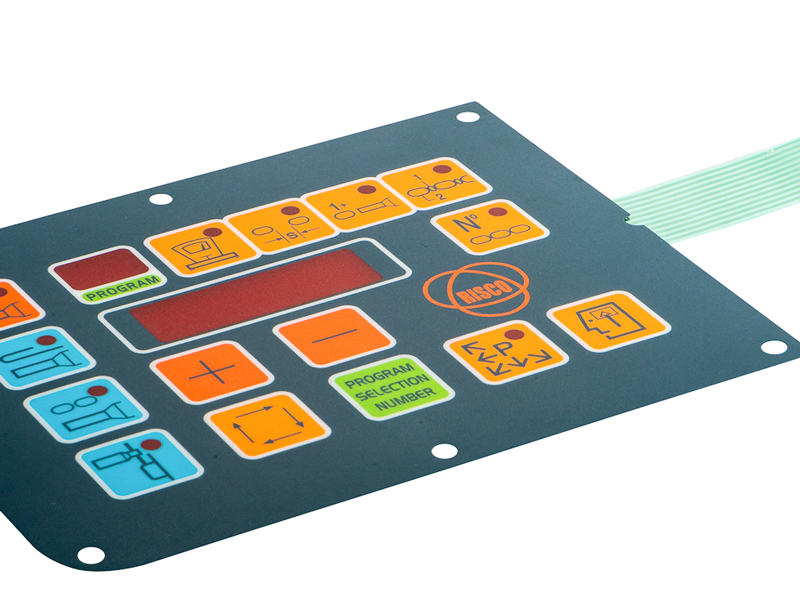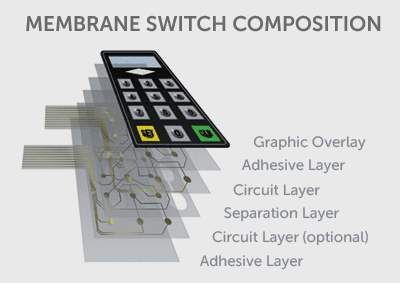The Impact of Membrane Switches on User Interface and Device Functionality
The Impact of Membrane Switches on User Interface and Device Functionality
Blog Article
Comprehending Membrane Switches Over: The Trick to Reliable and sturdy Controls
Membrane switches over represent an important aspect of contemporary user interface design, mixing functionality with durability in numerous applications. As we explore the ins and outs of membrane layer buttons, it comes to be clear that their duty in improving control systems is both complicated and profound, elevating inquiries about exactly how finest to utilize their capabilities in future advancements.
What Are Membrane Layer Switches?
Membrane layer buttons are an innovative solution in the realm of interface modern technology, incorporating functionality and design effortlessly. These devices work as a user interface between customers and electronic systems, incorporating a number of parts into a compact style. Normally built from flexible, thin layers of materials, membrane layer switches are created to reply to touch, making it possible for customers to engage with equipment and electronic devices efficiently.
The main elements of a membrane button include a published circuit layer, graphic overlay, and a spacer layer that stops unplanned activation. The graphic overlay can be personalized to show brand name identity or customer preferences, enhancing aesthetics while guaranteeing use. Membrane layer switches are commonly made use of in different applications, consisting of clinical gadgets, consumer electronics, and industrial equipment, owing to their sturdiness and resistance to ecological aspects such as dampness and dust.
One of the crucial benefits of membrane switches is their capacity to endure damage, making them ideal for high-traffic atmospheres. Additionally, they are lightweight and call for minimal area, permitting ingenious designs in item development. In general, membrane changes stand for a effective and useful choice for modern-day electronic user interfaces, marrying innovation with user-centric style principles.

How Membrane Switches Job
The procedure of membrane switches over rest on a simple yet effective device that translates user input into electronic signals. These switches include numerous layers, normally including a visuals overlay, a spacer layer, and a circuit layer. When an individual presses the button, the leading layer deforms, enabling a conductive component in the circuit layer to make contact with a corresponding conductive pad on the underside of the visuals overlay. This contact shuts the circuit and sends an electronic signal to the tool, indicating that the switch has been turned on.
The style of membrane layer switches can differ, however they usually integrate domes or responsive components to offer comments to the individual, enhancing the overall experience. The products utilized in membrane switches, such as polyester or polycarbonate, add to their longevity and resistance to environmental aspects, consisting of wetness and dirt. The published circuits are commonly encapsulated, which shields them from wear and tear over time.

Benefits of Membrane Switches
One of the main benefits of membrane switches is their convenience in layout, permitting them to be personalized to meet particular individual needs and visual needs. This adaptability includes different sectors, where different forms, dimensions, and shades can be employed to improve customer interaction and visual allure.
Additionally, membrane layer switches are known for their toughness. Constructed from durable materials, they are resistant to dust, wetness, and physical wear, which considerably prolongs their life expectancy compared to traditional mechanical switches. This resilience makes them specifically suitable for high-traffic settings and applications requiring long life.

In addition, membrane layer buttons offer a structured account, causing a thinner design that can be integrated into various devices without adding mass. This feature not only improves the visual allure however additionally contributes to a more ergonomic product design.

Applications of Membrane Switches
Versatile and straightforward, membrane buttons find applications across a variety of industries, consisting of clinical tools, consumer electronics, and industrial tools. In the clinical field, these switches are indispensable to tools such as diagnostic equipment, individual monitoring systems, and mixture pumps, where integrity and convenience of cleaning are important. Their ability to keep and stand up to official statement harsh atmospheres performance makes them ideal for such applications.
In customer electronic devices, membrane layer switches are used in products like microwaves, cleaning makers, and push-button controls - membrane switch. Their smooth design permits for user-friendly interface, boosting the general user experience while providing resilience and resistance to tear and use
Industrial tools likewise takes advantage of membrane buttons, specifically in control panels for machinery and automation systems. These switches offer defense against dirt and dampness, making certain constant performance in challenging atmospheres. Furthermore, their customizable features permit suppliers to customize them to specific operational requirements, improving effectiveness and functionality.
Selecting the Right Membrane Switch
When picking a membrane button, it is important to consider different factors that affect efficiency and suitability for details applications. The primary factors i was reading this to consider include ecological conditions, tactile responses, sturdiness, and layout specifications.
First, examine the operating setting; switches subjected to wetness, chemicals, or severe temperatures need certain products to guarantee durability and capability. Next, evaluate the need for tactile responses. Relying on user interaction, some applications might take advantage of a responsive reaction to verify activation, while others might favor a non-tactile design for aesthetic reasons.
Longevity is another crucial aspect; membrane layer switches should be developed to stand up to frequent use, impacts, and abrasion. Ensure the selected button can withstand the anticipated lifecycle, especially in high-usage circumstances.
Verdict
Finally, membrane layer switches serve as necessary elements in the layout of trustworthy and resilient control systems across various sectors. Their compact layout, combined with robust construction and customizable features, enhances customer communication while making sure durability sought after atmospheres. The adaptability of membrane layer changes enables for customized services that meet specific functional demands, enhancing their significance in modern innovation. membrane click to investigate switch. As markets continue to evolve, the relevance of incorporating efficient membrane switch services can not be overstated.
Membrane layer switches stand for a vital aspect of contemporary user interface style, mixing functionality with strength in various applications.Membrane layer buttons are an advanced remedy in the realm of customer interface technology, integrating capability and design effortlessly. Normally created from adaptable, thin layers of materials, membrane layer switches are created to react to touch, enabling individuals to interact with equipment and digital devices efficiently.
The layout of membrane layer switches can vary, however they usually include domes or tactile aspects to give responses to the user, improving the general experience.In verdict, membrane layer switches over serve as necessary parts in the layout of trusted and durable control systems across various industries.
Report this page